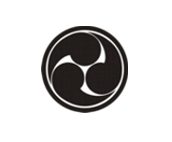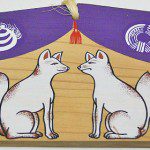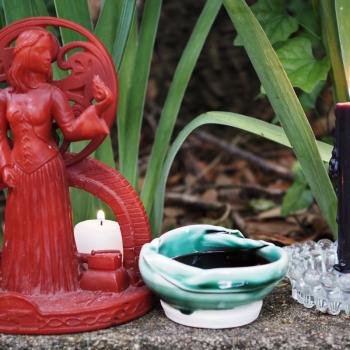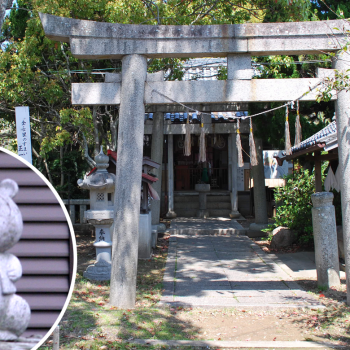In Asia, the swastika has fortunately survived its abuse by the Nazis relatively untarnished and is still commonly used as a religious symbol, as it has been since Neolithic times. In Hinduism it represents the four faces of Brahma and is used as a protective charm. In Buddhism it symbolises the Universe and eternity. Being Buddhist countries, China and Japan places considerable importance on the manji; it even has its own Chinese character, 卍 (the Japanese pronunciation of this character, “manji,” can literally be translated as “symbol of everything”). That’s why you’ll see the manji not just on maps in Japan, but on temples, statues, ritual tools and just about any other Buddhist item you can imagine. Bearing this significance of the manji in mind, you can see why some Japanese would be reluctant to see it disappear from maps – it would, in some ways, be “letting the Nazis win.”
The swastika isn’t the only religious symbol that has suffered the abuse of racist political groups. Other spiritual symbols, many of which are sacred to Pagans, are under threat of becoming corrupted like the swastika, due to their usage by neo-Nazis and other hate groups. Some of these “endangered” symbols include:
 Sun Cross – A solar symbol linked to the swastika, which is also used in alchemy to represent the Earth. Far-right groups that have used this symbol include the Swedish Nordic Reich Party (now thankfully dissolved).
Sun Cross – A solar symbol linked to the swastika, which is also used in alchemy to represent the Earth. Far-right groups that have used this symbol include the Swedish Nordic Reich Party (now thankfully dissolved).
![]() Celtic Cross – A symbol sacred to both Pagans and Christians, and one that can represent harmony between the two religions. It is also used by white supremacists including the neo-Nazi website Stormfront.
Celtic Cross – A symbol sacred to both Pagans and Christians, and one that can represent harmony between the two religions. It is also used by white supremacists including the neo-Nazi website Stormfront.
![]()
![]()
 Runes – Sacred and inherently magical to followers of Asatru and other Germanic Pagan paths, a number of runes have been appropriated by fascists, including odal, sowilo and tiwaz.
Runes – Sacred and inherently magical to followers of Asatru and other Germanic Pagan paths, a number of runes have been appropriated by fascists, including odal, sowilo and tiwaz.
![]() Labrys – The double-headed axe, an emblem used by some Hellenic Polytheists and members of the Goddess movement, has also been adopted by Greek and Italian fascists.
Labrys – The double-headed axe, an emblem used by some Hellenic Polytheists and members of the Goddess movement, has also been adopted by Greek and Italian fascists.
 Tomoe – As you can see from my blog header, this is an especially sacred symbol for me. It has deep meanings in Shinto, combining the wheel-like elements of the Buddhist manji with the magatama, the comma-shaped symbol representing the soul and the sacred treasures of the kami (the “tama” of “magatama” can mean both “soul” and “jewel”). Unfortunately, as this disturbing VICE Japan video shows, Japan’s far-right are also beginning to use it, partly due to its links with the Imperial family, and partly due to its resemblance to the swastika.
Tomoe – As you can see from my blog header, this is an especially sacred symbol for me. It has deep meanings in Shinto, combining the wheel-like elements of the Buddhist manji with the magatama, the comma-shaped symbol representing the soul and the sacred treasures of the kami (the “tama” of “magatama” can mean both “soul” and “jewel”). Unfortunately, as this disturbing VICE Japan video shows, Japan’s far-right are also beginning to use it, partly due to its links with the Imperial family, and partly due to its resemblance to the swastika.
It is upsetting when we Pagans see our sacred symbols used by groups that promote hatred and extremist ideology. But seeing as there is no reasonable way to stop anyone using these symbols (arguably, nobody really “owns” them after all), how should we respond to this? Should we abandon those symbols as their meanings change and adopt new ones? Or should we continue to display them proudly in order to keep the symbols’ original meanings alive?
I personally believe that we should continue to use the “endangered” symbols shown above, while at the same time denouncing groups and individuals who have taken them and turned them into symbols of hate. It may be difficult for us to use the swastika in its original meaning at the present time, due to the extreme visceral reaction it still induces in many Westerners, but for emblems like the Celtic cross, runes and tomoe, there is still hope. At the moment, I don’t think the general public identifies them first and foremost with extremist groups – yet. We just need to make sure that we continue to promote them as symbols of spirituality, so that when people see them, they associate them with positive meanings rather than the hate and anger that extremists would have us feel.
And who knows – perhaps in the future, if we achieve in creating a world where white supremacists and racist extremists are no longer a threat, the swastika’s primary meaning as a symbol of peace and happiness will be universally restored.
All symbol icons Public Domain/Wikimedia Commons.
Further reading and references:
















